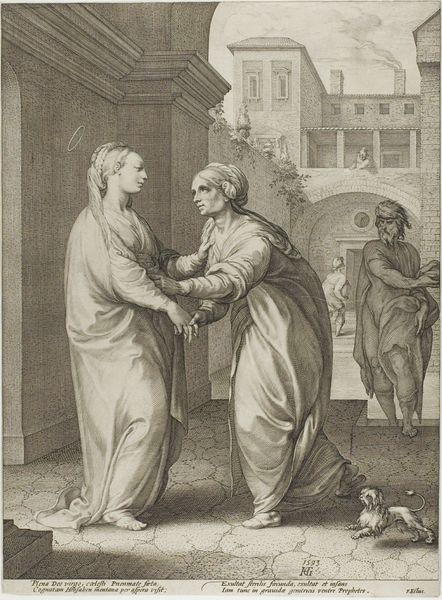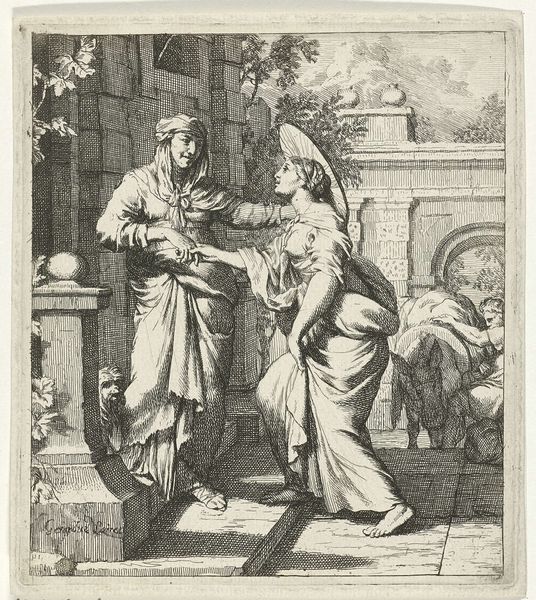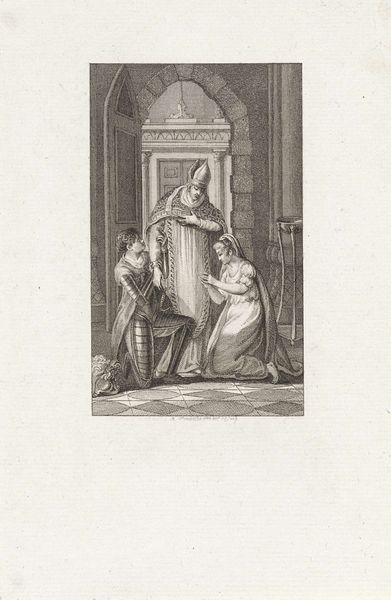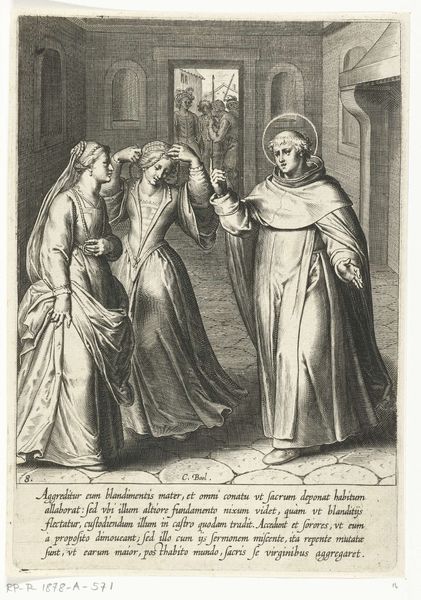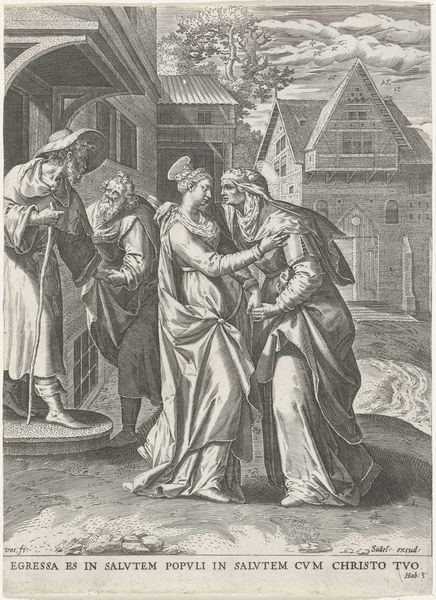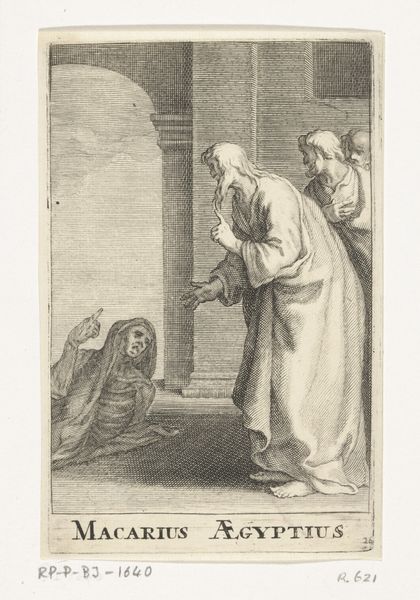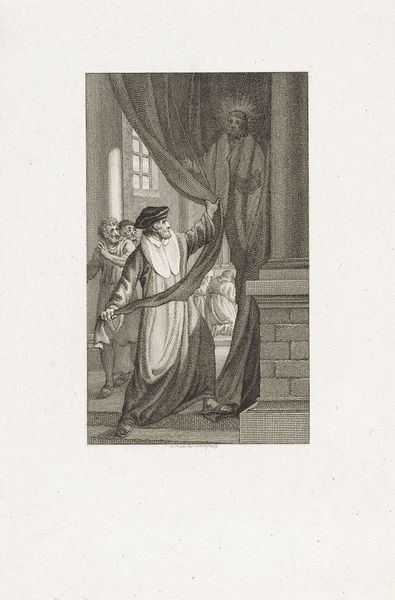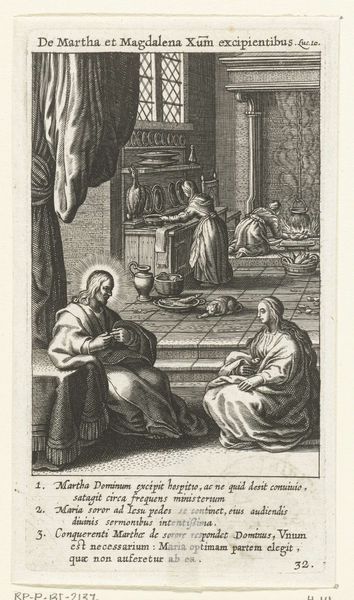
print, engraving
# print
#
caricature
#
figuration
#
line
#
history-painting
#
northern-renaissance
#
engraving
Dimensions: 492 mm (height) x 373 mm (width) (bladmaal)
Curator: Standing before us is "The Visitation," an engraving created in 1593 by Hendrick Goltzius, part of the Northern Renaissance. I am immediately struck by the intense linear quality, which seems almost sculptural in its effect. Editor: My first impression? Intimacy. Even through the cool remove of the engraving, the way Elizabeth reaches out to Mary, the clasp of their hands – it’s so tender, so quietly monumental. The lines create depth. It feels very solemn but full of promise at the same time. Curator: Goltzius truly mastered line, didn’t he? See how he uses swelling and tapering lines to define form and space, giving the composition that three-dimensional effect, which really highlights the delicate exchange you’re referring to. Look closely, and you notice tiny details. Like a little dog in the foreground, quietly bearing witness. What does this detail say? Editor: Ah, the dog, always faithful, the quiet observer. To me, it symbolizes fidelity, watchfulness... but also domesticity. This isn’t just a meeting of saints; it's a moment grounded in everyday life, the sacred entering the ordinary. Notice the two other figures on the archway behind. John the Baptist, still in his mother's womb, is seen "jumping for joy" in the presence of Jesus, who is in Mary's womb. In the Renaissance such iconography carried all sorts of meanings. Curator: Absolutely. And Goltzius manages to convey this sense of anticipation so well. This meeting, heavy with significance and history, really invites us to consider those unseen forces shaping lives, both then and now. I wonder, too, about the history of the image itself—as an engraving, it's inherently reproducible, widely disseminated. How did its message shift and adapt as it traveled through different cultural contexts? Editor: It's an interesting question. Seeing it now, centuries later, I feel like I'm encountering not just the biblical scene, but also the echoes of all those who have contemplated this image before me. The visual language transcends time and makes "the visitation" happen to all people throughout all time. This makes the artwork not just beautiful to look at, but spiritually provocative to reflect on. Curator: Indeed. The weight of centuries, made whisper-thin through the grace of the line. I will keep those words with me!
Comments
No comments
Be the first to comment and join the conversation on the ultimate creative platform.
